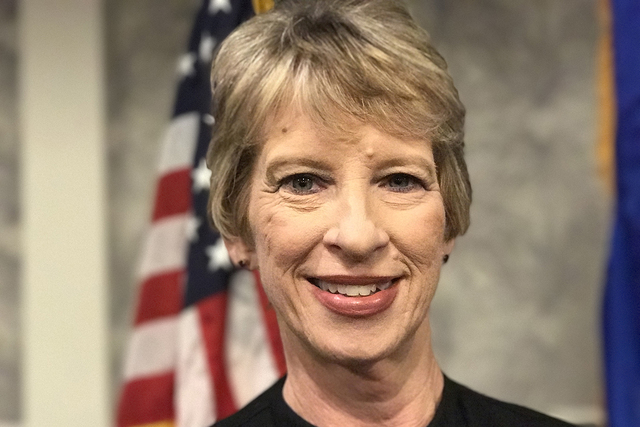
Peggy Kearns keeps the motto of the Department of Veterans Affairs, coined in 1865 by President Abraham Lincoln, front of mind as she works to ensure that military veterans in Southern Nevada receive prompt, quality medical attention: “Care for him who shall have borne the battle and for his widow, and his orphan.”
But Kearns, director of the Veteran Affairs Southern Nevada Healthcare System, said living up to Lincoln’s edict in his second inaugural address is challenging, despite a $464 million annual budget.
The biggest problem, she said, is recruiting and retaining doctors and health care professionals in an area that’s short of them.
“We’re working on our access challenge by looking at our processes and how we can be more efficient in using our staff, our physicians and how we schedule people,” she said. “Every day we track how we are getting people in, and how fast we’re getting them in, and looking at how we can do that quicker and better.”
Kearns, speaking Thursday to the Military Officers Association of America’s Southern Nevada Chapter, said she and the VA staff at the North Las Vegas VA Medical Center and satellite clinics in Laughlin and Pahrump are nonetheless making progress in reducing appointment wait times.
Average wait times for primary care decreased from 9.91 days a year ago to 5.71 days as of Feb. 1, while specialty care remained virtually unchanged at 14.57 days. The district offers same-day access in primary care and mental health for vets with urgent needs.
The declines come amid a growing caseload for the VA district that serves 158,000 veterans who live in Clark, Nye and Lincoln counties, as well as parts of southern Utah, northern Arizona and southeastern California.
The number of outpatient appointments has increased 72 percent since fiscal 2011, reaching 857,295 in 2016, Kearns said.
Exceeding expectations
More than 59,000 individual veterans were treated in the Southern Nevada VA system last year, a total that already exceeds the projection that the district would treat 55,000 veterans by 2022.
Those numbers serve as a Presidents Day reminder how far the VA system has come since Lincoln’s address on March 4, 1865, when his intent was “to bind up the nation’s wounds” from the Civil War.
The federal government authorized its first medical facility for veterans 54 years before Lincoln promised to expand care to all veterans.
Now the collection of what were originally known as “old soldiers’ homes” is a much more elaborate system of health care facilities — more than 1,200 in all — in all 50 states, as well as Puerto Rico, Guam and the Philippines, serving 8.9 million veterans.
“We are the largest integrated health care system in the United States, some say the world,” Kearns said.
The VA expanded locally with the 2012 opening of the North Las Vegas VA Medical Center, dubbed the “crown jewel” of the network by then-VA Secretary Eric Shinseki because it was the first major VA hospital built in 20 years.
Two years later, however, the nationwide VA scandal over wait times erupted. Long appointment wait times in Phoenix and other VA facilities, including the North Las Vegas hospital, forced Shinseki to resign. His successor, Robert “Bob” McDonald, vowed to change the VA’s culture and improve access to health care.
Under the Trump administration, Kearns predicts former VA Undersecretary of Health David Shulkin — unanimously confirmed Feb. 13 as VA secretary — will carry’s McDonald’s torch for better access and a veteran-friendly culture.
Contact Keith Rogers at krogers@reviewjournal.com. Find him on Twitter: @KeithRogers2